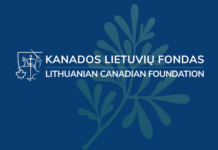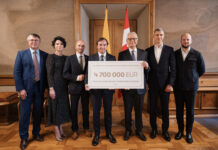
How do Central and Eastern European Countries Fare?
While most countries in Central and Eastern Europe score below the EU average in a new report looking at sustainable development goals, progress is being made across the region, reports Emerging Europe.
The European Union’s statistics directorate, Eurostat, recently published a major report on how individual countries are progressing with their sustainable development goals, or SDGs.
Apparently, for EU member states in Central and Eastern Europe, SDG indicators for most countries fall below the EU average.
Sustainable development goals, now codified by the United Nations, are made up of 17 interlinked areas, including the eradication of poverty, the reduction of inequalities, and climate action. Together, they encompass the economic, political, social, and environmental areas that countries should focus on in order to build a future which is sustainable. Much of CEE is underperforming. In Bulgaria for example, only two indicators (partnership for the goals; life on land) are above the European Union average.
Why the discrepancy between East and West? “The starting points of the former Eastern Bloc countries and the rest of Europe are vastly different,” says John Pabon of Fulcrum Strategic Advisors, a risk management firm. “Therefore, it makes sense that CEE countries may be a bit behind.” Some CEE countries are doing very well, notably Estonia and Slovenia, where most SDG indicators are above the EU average.
In addition, despite the fact that several countries in the CEE region have indicators below the EU average, it is extremely encouraging that they are at least showing progress on most.
“Looking at the CEE region as a whole, we can actually see much more progress towards SDGs than we could have predicted just a couple of years ago,” says Agnieszka Gajewska, public sector and infrastructure lead at PwC CEE (a network of firms, consisting of separate legal entities working to help our clients in local markets become more successful and globally competitive.) “The region has undergone a major transformation, with great strides made in the socio-economic sphere and progress recorded against most of the 17 SDG indicators.”
Looking at the results posted by Eurostat, this is clearly seen in Poland for example, where all but one of the SDGs — gender equality — show progress. According to Pabon, not all SDGs are of equal importance at all times. “There is a difference between what I call practical SDG targets and aspirational SDG targets,” he says. “The first are those that are critical now (SDGs on the environment, poverty, education, and equality). These are also central to membership of the EU, so for CEE countries, they would have already been working to amend these particular areas. These goals are where CEE countries are most on par with the rest of Europe,” he told Emerging Europe.
In the second group are goals such as affordable and clean energy, decent work and economic growth, and industry innovation and infrastructure. “Things like innovation, economic growth, and collaborative partnerships don’t happen overnight. When you’re trying to keep a country afloat, they aren’t necessarily top-of-mind either. They are also areas where Western Europe has a huge head start,” Pabon adds.
Regardless, it is clear that more work is needed to achieve the sustainable development goals in the CEE region. “More rapid progress is needed but it’s difficult for many reasons,” said Gajewska. “There is still low awareness of environmental and climate challenges, insufficient regulations and public incentives, as well as expertise and experience. In the case of Romania and Bulgaria, the capacity of public institutions and absorption of EU funds need to be improved in the future.”
Romania, like Bulgaria, is a country where most SDG indicators are below the EU average. Yet in Romania too, most SDG indicators are at least moving in the right direction. Gajewska points out that sustainability needs to become a critical priority in CEE and according to UN estimates five to seven trillion US dollars (or 4.7 to six billion euros) will need be mobilized each year globally in order to meet the sustainable development goals: much of this in emerging Europe.
These are huge amounts of money, but CEE countries can take advantage of EU funds — both the European Green Deal budget which comes to just over one trillion euros and its Recovery and Resilience Fund, worth 750 billion euros.
In order to make it happen, collaboration within the EU is imperative, according to Pabon.
As Pabon says, countries in CEE may not reach their goals overnight, but according to the data, they are on their way. What happens next will depend on how well they use EU funds, and how seriously they take the need for partnerships across different sectors. The resources are available with strong partnership among global, regional and local, private and public actors – combined with well-structured and strategic approaches, “ said Gajewska.
Emerging Europe, partners of LRT English



























